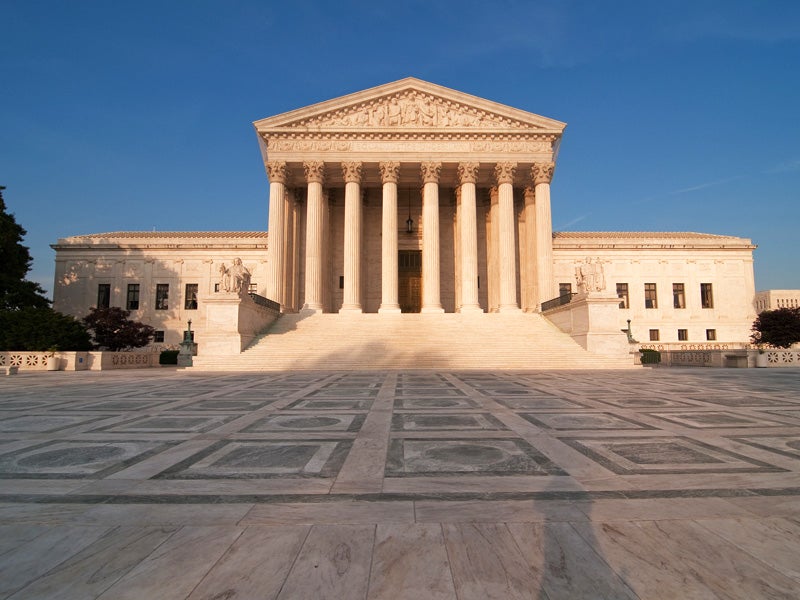Don’t Panic: The Supreme Court’s Decision on Mercury and Air Toxics
The fate of the Mercury and Air Toxics safeguards is still to be determined after the Supreme Court's decision grants a challenge to the EPA’s long overdue limits on toxic pollution.

This page was published 10 years ago. Find the latest on Earthjustice’s work.
The Supreme Court’s very last decision for the term, Michigan v. EPA, grants a challenge to the the EPA’s long overdue limits on toxic pollution from coal-fired power plants by a coalition of power companies, coal mining companies and allied states. In a narrow 5-4 decision, Justice Scalia portrayed the EPA as having unreasonably refused to consider cost when the agency decided that controlling power plants’ toxic pollution is “appropriate and necessary.”
Some of the petitioners asked the court to vacate the limits – i.e., throw them out altogether. Instead, the court merely remanded the rule to the D.C. Circuit Court for further proceedings consistent with its holding that the EPA should have considered cost. That choice of remedy was important: the rule will save up to 11,000 lives each year, and vacating or blocking it, as some coal mining and power companies requested, would cause thousands of people to die unnecessary premature deaths.
Further litigation in the D.C. Circuit is all but certain. Nothing in the Supreme Court’s ruling, however, requires the EPA to withdraw or even change the limits. All the EPA has to do is explain why it believes that limiting power plants’ toxic emissions is “appropriate and necessary” when the costs to industry are considered. As Justice Scalia explains, the majority opinion does not require a formal cost benefit analysis and leaves it “up to the agency” to decide “how” cost should be considered.
The EPA can provide the desired analysis quickly because it already has considered the cost to industry and concluded that the costs are vastly outweighed by the public benefits of controlling power plants’ pollution. Reducing power plants’ emissions of fine particulate matter will save between 4,200 and 11,000 lives every year as well as preventing thousands of non-fatal heart attacks and asthma attacks, and hundreds of thousands of lost work days. The economic value of those health benefits to the public is between $33 billion and $90 billion per year – approximately $3-$9 in public benefits for every $1 in cost to industry. The court did not take issue with any of these findings. Rather, it faulted the EPA for not including them in its justification for the rule.
The majority’s reasoning in this decision is disappointing. It is not obvious, as the majority assumed, that Congress intended the EPA to consider cost when it determined whether regulating power plants’ toxic emissions was appropriate and necessary. As the dissent points out, it is at least as likely that Congress intended the agency to base that initial decision on public health and environmental concerns and reserve the consideration of cost to a later stage in the regulatory process when the EPA would know what reductions were required. Justice Scalia’s comparison of the EPA’s careful and reasoned approach to buying a Ferrari without asking the price is not just shallow, but wholly inappropriate for health protections that will save thousands of lives each year.
What matters now, though, is still what mattered when the EPA concluded almost 15 years ago that regulating power plants’ toxic emissions is appropriate and necessary. Coal-fired power plants remain the worst of the worst industrial polluters. They still emit more toxic pollution than any other industry and, in the case of some pollutants like mercury and arsenic, as much or more than every other polluting industry combined. Then, as now, mercury from power plants contaminates lakes and rivers across the country and, because they eat the fish in these waters, thousands of American women have enough mercury in their bodies to endanger the health of their nursing infants and unborn babies. Then as now, people die every year from breathing pollution that the power companies could have prevented.
This situation is unnecessary and unacceptable. The good news is that the EPA has gone a long way to fixing it and the Supreme Court’s decision, for all its flaws, has not stopped this progress. The Obama administration can satisfy the court’s decision and keep the vital health protections that its limits on power plant pollution provide. By doing so, it will secure a great legacy of controlling the worst and longest-lasting air pollution threat that this country faces.
Earthjustice’s Washington, D.C., office works at the federal level to prevent air and water pollution, combat climate change, and protect natural areas. We also work with communities in the Mid-Atlantic region and elsewhere to address severe local environmental health problems, including exposures to dangerous air contaminants in toxic hot spots, sewage backups and overflows, chemical disasters, and contamination of drinking water. The D.C. office has been in operation since 1978.